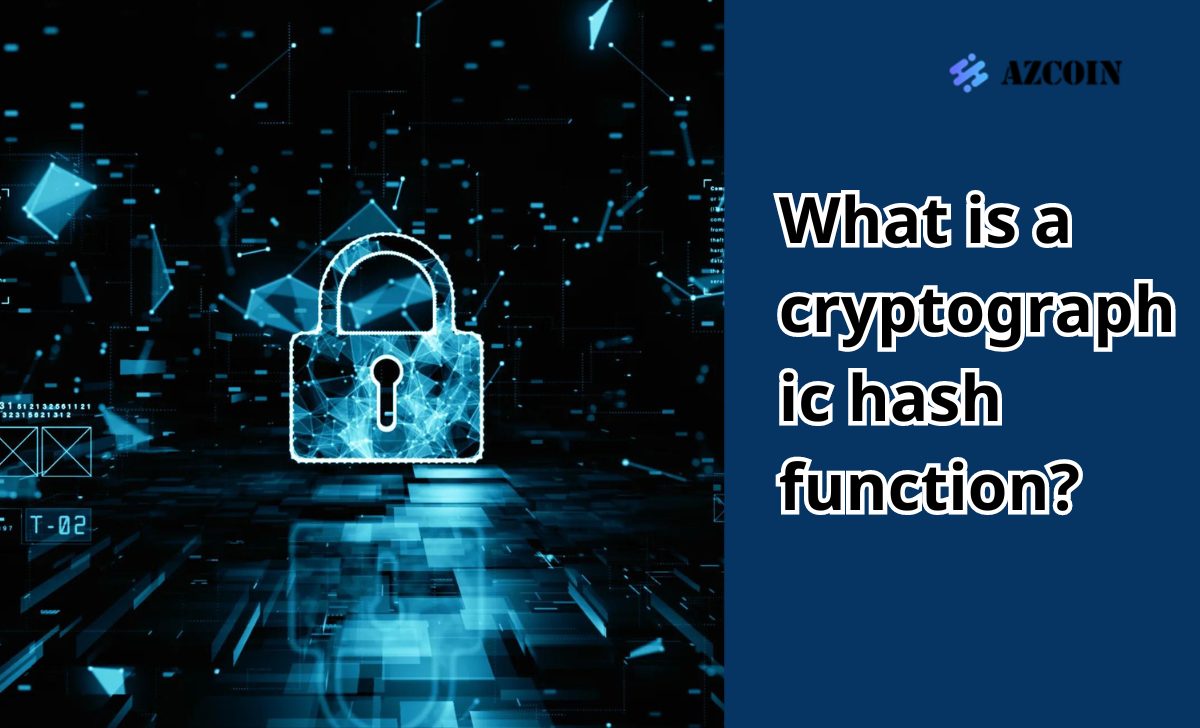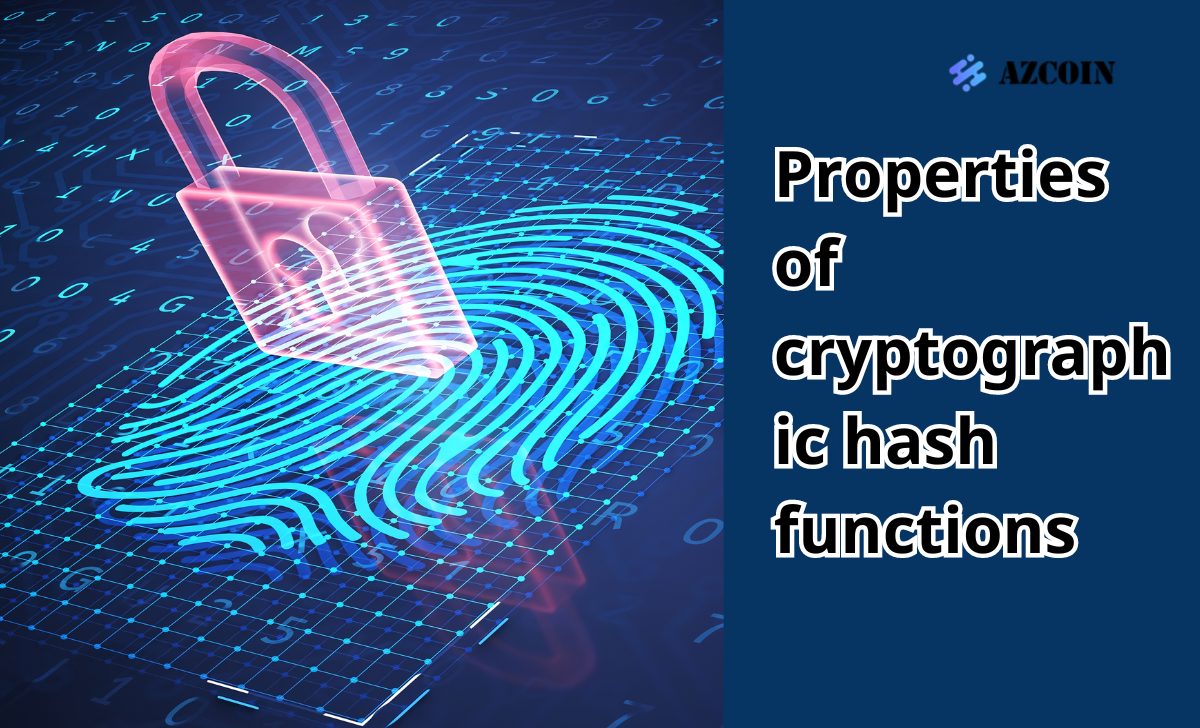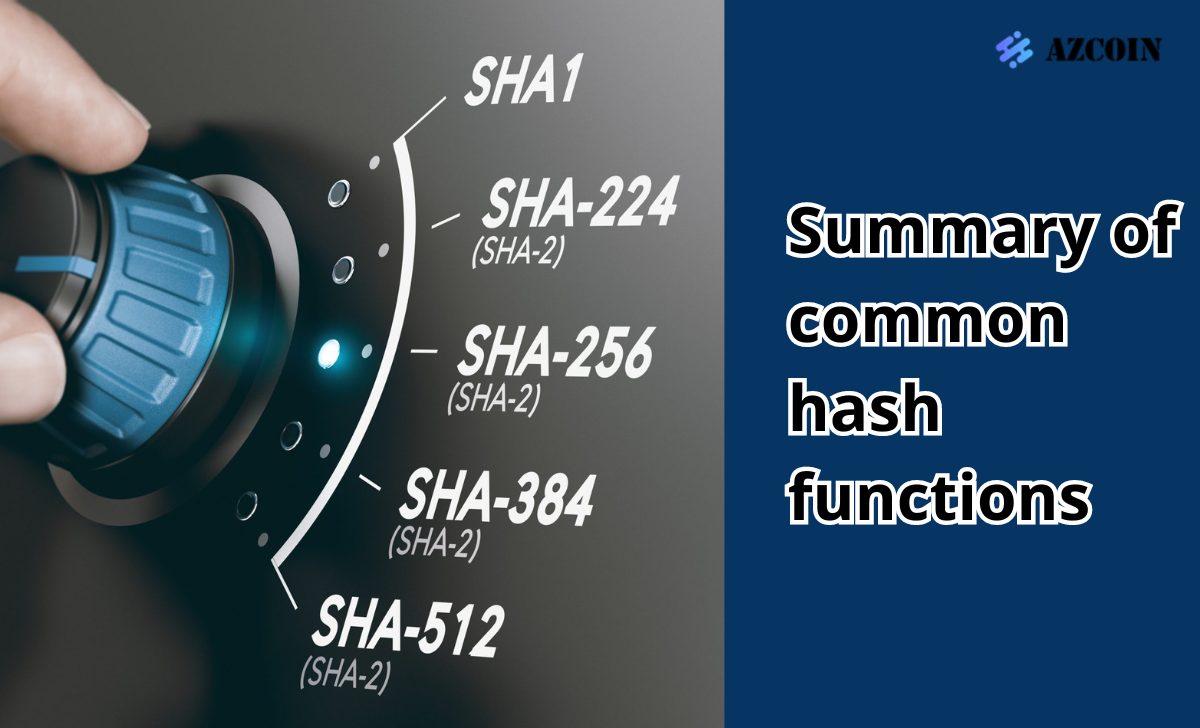Cryptographic hash function is one of the important technologies in the field of information security. It not only helps to protect data but also ensures the integrity and authenticity of information.
In this article, AZCoin will join you to learn about cryptographic hash functions, how it works, the required properties and also synthesize some common hash functions today.
What is a cryptographic hash function?

Cryptographic hash function is an algorithm that converts an input of any length into a fixed-length string of characters, known as a hash value. It is designed to ensure security with properties such as unidirectional, non-collision, and sensitivity.
Cryptographic hash functions are often used to protect data, validate and ensure the integrity of information in secure applications, including digital signatures and blockchain .
How does a cryptographic hash function work?
A cryptographic hash function works by taking an input of any length and processing it through a series of complex computational steps to produce a fixed-length output hash value.
The process typically involves splitting the input into smaller blocks of data, then applying logical operations, swapping and transforming the data according to a defined algorithmic sequence.
Each step in this sequence is designed to create diffusion and blending of information, so that even a small change in the input will result in a large and difficult to predict change in the output hash value. This ensures that the hash value is unique and cannot be predicted from the same inputs.
In addition to learning about cryptographic hash functions, you can also refer to related articles such as: What is MetaMask or What is Move to Earn.
Properties of cryptographic hash functions

For a cryptographic hash function to be considered secure and efficient, it needs to satisfy a number of important attributes such as:
- Unidirectional: Hash functions are easy to calculate a hash value from an input, but it is almost impossible to recover the original input from a given hash value. This helps protect the original data from being reversed or restored, ensuring information security
- Non-collision: Ensures that it is difficult (and almost impossible) to find two different inputs that produce the same hash value. This prevents a situation where two different messages can be considered identical if they produce the same hash value, protecting the uniqueness and integrity of the data
- Sensitivity: A small change in input will produce a large and unpredictable change in the hash value. This ensures that even the smallest change in the input data will result in a completely different hash value, which helps to resist tampering or editing.
Summary of common hash functions

To trade cryptocurrencies safely, you can refer to the best cryptocurrency exchanges 2024. Here are some popular hash functions:
MD5
MD5 (Message-Digest Algorithm 5) is a hash function developed in the early 1990s. It generates a hash value of 128 bits in length. MD5 was once widely used to check the integrity of data, but is no longer considered safe from collision attacks due to its ability to find two different inputs for the same hash value.
SHA-1
SHA-1 (Secure Hash Algorithm 1) generates a 160-bit hash. It used to be commonly used in security applications and digital certificates, but has been considered unsafe since 2017 due to the possibility of collisions. Attacks on SHA-1 can find two different messages with the same hash value, making it no longer suitable for highly secure applications.
SHA-2
SHA-2 is a family of hash functions, including variants such as SHA-224, SHA-256, SHA-384, and SHA-512. These functions generate hash values of 224, 256, 384, and 512 bits, respectively. SHA-2 was designed to overcome the weaknesses of SHA-1 and is still considered secure for most secure applications.
SHA-256
SHA-256 is a variant of SHA-2, which produces a hash value of 256 bits in length. It is one of the most widely used hash functions today, especially in blockchain, network security, and applications that require high integrity and security.
SHA-512
SHA-512 is another variant of SHA-2, which produces a hash value of 512 bits in length. Compared to SHA-256, SHA-512 provides higher security thanks to its larger hash value length, but also requires more computational resources. It is often used in applications that require very high security or large data processing.
Some knowledge related to Cryptographic Hash you can refer to: Proof of Work (PoW), Proof of Stake (PoS), Consensus Algorithm,…
Basic applications of cryptographic hash functions

Cryptographic hash functions have wide applications in many different fields, including:
- Data integrity check : A cryptographic hash function helps verify if the data has been modified. When downloading a file, you compare the hash value of the downloaded file with the value provided by the provider. If the two values match, the file is not changed.
- Password security : The cryptographic hash function is used to store passwords securely by saving the hash value instead of the original password. When the user enters the password, the system calculates the hash value and compares it with the saved value. If it matches, the user is allowed to log in.
- Data Validation: The cryptographic hash function supports data validation through a digital signature. The signature is created by hashing the data and encrypting the hash value with the sender’s private key. The recipient decrypts it with a public key to verify the authenticity of the data.
- Search and organize data: Cryptographic hash functions can be used to create hash tables, an efficient data structure for finding and organizing data. Hash tables use hash functions to map data to different memory addresses, allowing efficient data access.
Conclusion
Through this article, AZcoin introduced you to the basic concepts of cryptographic hash functions and some popular hash functions. Understanding hash functions will help you assess the security of the systems and applications that you use every day.

I am Louis Dang, living in Ottawa, Canada. I am currently working as a trader for AZCoin company, with 7 years of experience in the cryptocurrency market, I hope to bring you useful information and knowledge about virtual currency investment.











